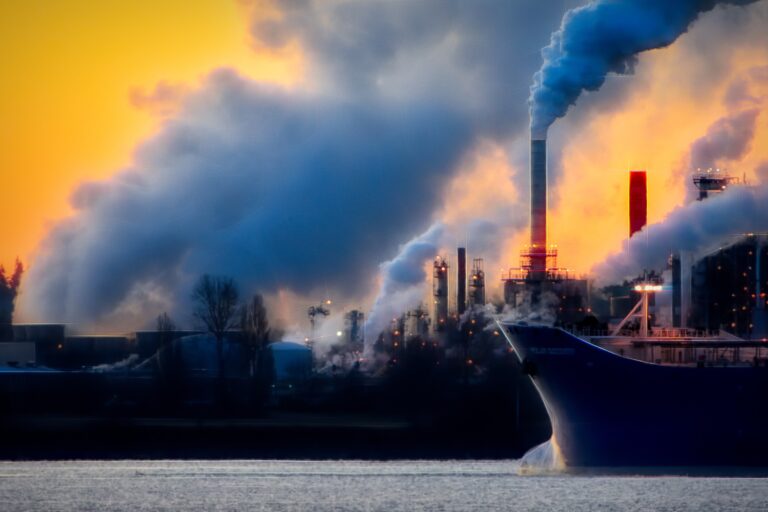With the world population growing, emissions from the burning of fossil fuels are increasing. Humans are releasing CO2 at a rate never before seen in history and this is causing many problems for our planet.
With more than eight billion people, it is important for us to understand what we can do to help reduce pollution and save our planet. In this articles, we’ll look at countries that have been identified as big polluters and their measures to effect change.
Table of Contents
The world’s 5 big polluter countries
The following countries that have been identified as the biggest polluters:
1. Big polluters: China
China has more than 1.4 billion people, making it the world’s most populous country. It also has a large economy, with GDP at $12 trillion in 2018, and is the biggest consumer of coal and oil in the world. China’s pollution problem is exacerbated by its reliance on coal for energy. As of 2020, it has been building coal-fired power plants every week for two decades. This trend shows no signs of slowing down.
China produce over 10,065 million tons of CO2 emissions. China is not immune to the effects of global warming, and natural disasters are becoming more frequent, causing devastation, significant human suffering, and biodiversity loss.
As of 2022, the economic superpower is ranked fourth in the world in terms of natural disasters. In recent decades, China’s extremely rapid industrial expansion has also contributed to record levels of air and water pollution.
2. Big polluters: United States
The United States is the world’s second-largest polluter, and it has the highest per capita emissions. The United States produce over 5,416 million tons of CO2. It’s no surprise that air pollution is one of the most serious environmental issues in the United States, as the world’s second-largest carbon dioxide emitter, trailing only China.
The country emitted approximately 67 million tons of pollution into the atmosphere in 2021, the vast majority of which came from the transportation and electric power sectors. Coal emissions in the country’s electric power sector increased for the first time since 2014 in the same year, according to the US Energy Information Administration (EIA).
This country has an advanced economy, with a large population and high levels of consumption. The US produces more oil and natural gas than any other country in the world. It’s also the largest consumer of energy overall. In fact, Americans use nearly twice as much energy as people in other countries do: on average they consume 28% more oil products than Europeans and almost 50 percent more than residents of China or India do.
3. Big polluters: India
India is the third biggest polluter in the world. It’s also one of the fastest growing economies, but it has a lot of work to do to improve its economy and protect its people from climate change.
India produce over 2,654 million tons of CO2. For India, industry accounts for more than half of this pollution, with vehicles accounting for 27%, crop burning accounting for 17%, and domestic cooking accounting for 7%. Over 2 million Indians die because of pollution-related causes.
The majority of pollution in urban areas is caused by industry and vehicles. Whereas the majority of pollution in rural areas is caused by the combustion of organic material. This material is used as a fuel for domestic stoves as well as in heaters used to keep homes warm during the colder months.
During the autumn and winter seasons, massive amounts of stubble are burned in the fields to prepare the ground for the next crop. India needs to invest in renewable energy sources like solar panels and wind turbines.
4. Big polluters: Russia
Russia is the world’s fourth biggest CO2 emitter. It has a population of 143 million and it emits about 5.4 billion tonnes of CO2 per year. Russia isn’t doing a lot to reduce its emissions. In fact, they increased 4% from 2017 to 2018. They also don’t seem concerned with meeting the goals set by the Paris Agreement because they have not submitted an official plan for reducing their carbon footprint.
In Russia, water pollution is a major problem, with 75% of surface water and 50% of total water polluted. Toward the end of the Soviet era, the government became increasingly aware of the importance of protecting fish spawning sites and habitats in order to restore fish catches to pre-Soviet levels.
Because only 8% of wastewater is fully treated before being returned to waterways, it has caused health issues in many cities and rural areas. Water treatment facilities that are obsolete and inefficient, as well as a lack of funding, have resulted in heavy pollution and the spread of waterborne diseases, such as the Moskva River cholera outbreak in 1995.
5. Big polluters: Japan
Japan is the world’s third-largest economy after the United States and China. Japan produces 1,162 million tons of CO2. Pollution of the air, land, and sea has become a major issue, causing health problems and contributing to climate change.
Natural disasters, in addition to pollution caused by human activity, contribute to environmental pollution. The island nation is vulnerable to natural disasters such as earthquakes, tsunamis, typhoons, and volcanic eruptions due to its geographical location. In recent years, concrete rubble has accounted for the lion’s share of disaster waste, followed by earth and stone debris.
Air pollution is one of Japan’s major environmental issues. Over the last decade, the number of deaths attributable to air pollution has steadily increased. Fossil fuel combustion, which is produced by power plants, industrial facilities, and automobiles, is a major source of air pollution. As a result, the majority of polluted areas are densely populated urban areas.
What are the necessary measures to tackle world pollution
So, what can be done about this? Well, it’s clear that governments need to take action on climate change. We need to invest more in renewable energy sources like solar and wind so they become competitive with fossil fuels. And we need to make sure that countries are meeting their targets when it comes to reducing emissions – because right now many of them aren’t doing enough.
There are many other ways to reduce world pollution.
The first is to recycle. Recycling reduces the amount of waste that ends up in landfills, which helps reduce the amount of pollution they produce.
Another way to reduce world pollution is by using less energy. You can also reduce world pollutant emissions by driving less often and choosing a more fuel-efficient vehicle.












